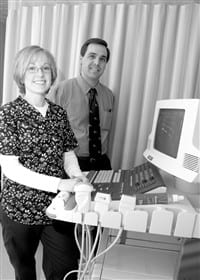No More Grey Areas Publication Of Stark II Final Rule Raises New Issues For Medical Practices
Just when doctors thought they had heard it all, the long-awaited Phase II of the Stark Law final rule was published in the March 27, 2004 Federal Register.
The Centers for Medicare and Medicaid Services (CMS) published Phase II as an interim final rule with comment period. Phase II will become effective July 26, 2004, more than three years after the effective date of Phase I.
Phase II clarifies some portions of the Stark Law but also raises new issues that are still being sorted out by the Medical Group Management Association (MGMA) and other health care advisors. Key provisions of the Stark Law addressed in Phase II include:
- Defining the requirements of several Stark Law exceptions governing compensation arrangements, including those dealing with rental of office space and equipment, personal service arrangements, and bona fide employment;
- Providing information regarding Stark Law-compliant compensation arrangements in group practice, employment, and other contexts;
- Clarifying other exceptions to compensation and ownership arrangements not addressed in Phase I, including exceptions relating to rural providers, ownership in hospitals, and publicly traded securities; and
- Providing guidance regarding the law’s reporting requirements.
Phase II also further clarifies provisions about which CMS requested public comments and makes other changes to the Phase I rule, including the following: - Providing additional clarification regarding the provision of productivity credit for “incident to” services as part of group practice productivity bonus compensation plans;
- Concluding that designated health services furnished by persons other than the referring physician (such as “incident to” services) will not constitute ‘personally performed’ services under the law;
- Clarifying the often-delayed “set in advance” provision of the Phase I rule to allow certain percentage-based compensation arrangements;
- Providing an expanded definition of “fair market value” for hourly compensation rates determined through the use of MGMA and other market data;
- Creating a new exception with a grace period to allow for the modification of certain non-compliant business arrangements; and
- Expanding the list of designated health services that are subject to the law’s prohibition to include, for example, certain bone density studies (e.g., CPT 76075 and 76076).
The specifics of these provisions will be addressed in future issues. However, clarification relating to one of the Stark II group-practice exceptions is included herein.
The “same building” exception in Stark II permits group practice physicians to refer Medicare and Medicaid patients for designated health services (DHS) to their own facility at the same location in which the group practice maintains an office, rendering “substantially” all the services it normally performs which are unrelated to designated health services. To meet the substantial unrelated services test, the final rule specifies that the group practice must meet one of the following three conditions:
- The practice’s office must be open at least 35 hours a week, with doctors from the group providing services for 30 hours, most of which must be unrelated to DHS;
- The office is open at least eight hours a week, and the referring physician practices there six hours a week. The patient receiving DHS at the site must typically receive other services at the same site; or
- The office is open at least eight hours a week, physicians from the group must regularly practice there six hours a week, and the referring physician must be present when the patient receives a DHS.
There are few, if any, surprises in the final rule, but doctors should review their compensation and financial arrangements carefully, as some of the grey areas of the Stark Laws have been eliminated.
Also, doctors should be advised that enforcement of the Stark Law is no longer a theoretical possibility. The recent Pastor Medical Associates non-compliance case — which cost the four-doctor medical group over $230,000 to settle — is evidence of the teeth in this law and the determination of the federal government to enforce it.
James B. Calnan, CPA, is partner-in-charge of the Health Care Services Division of Meyers Brothers Kalicka, P.C., in Longmeadow; (413) 567-6101.


